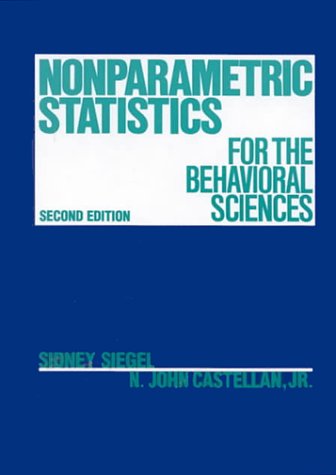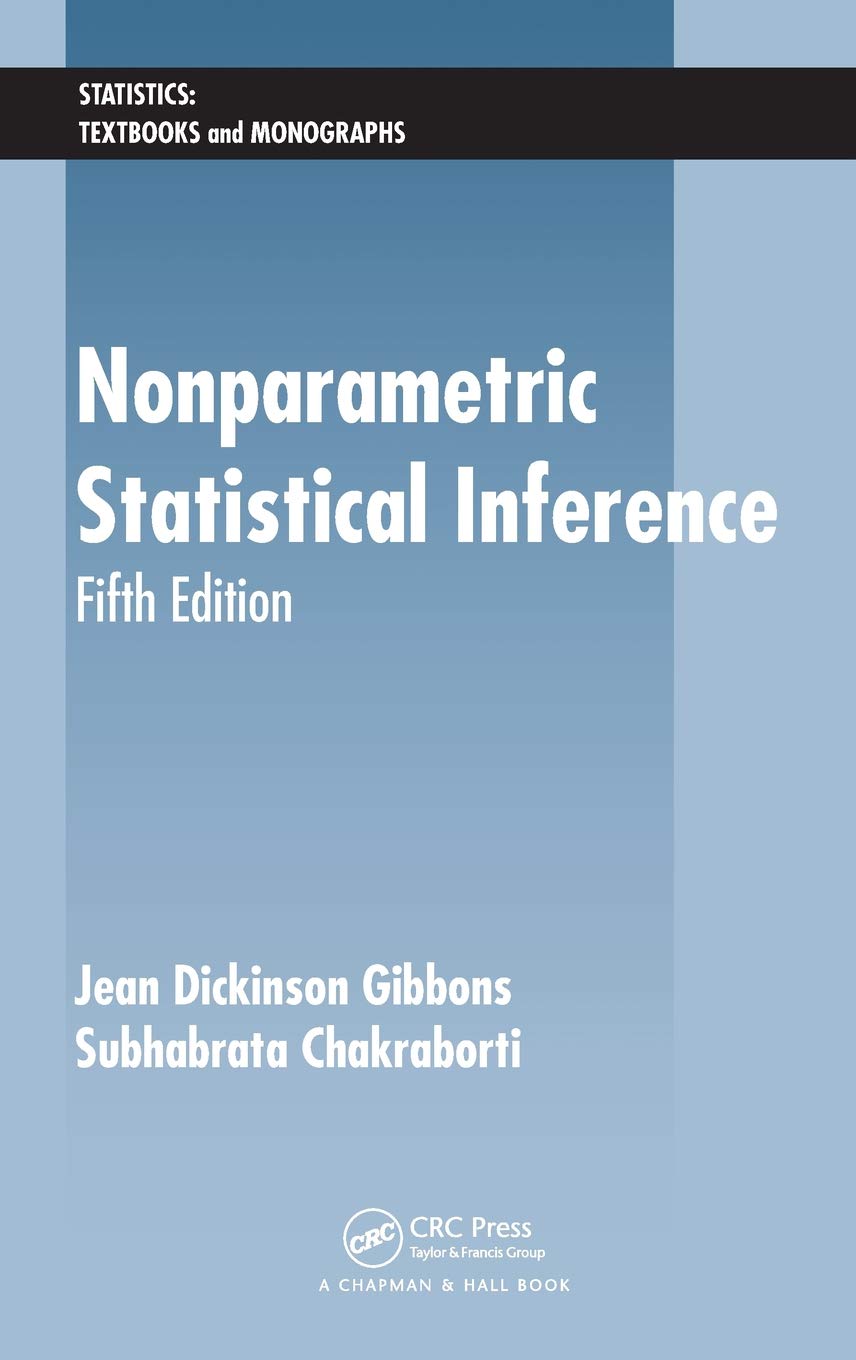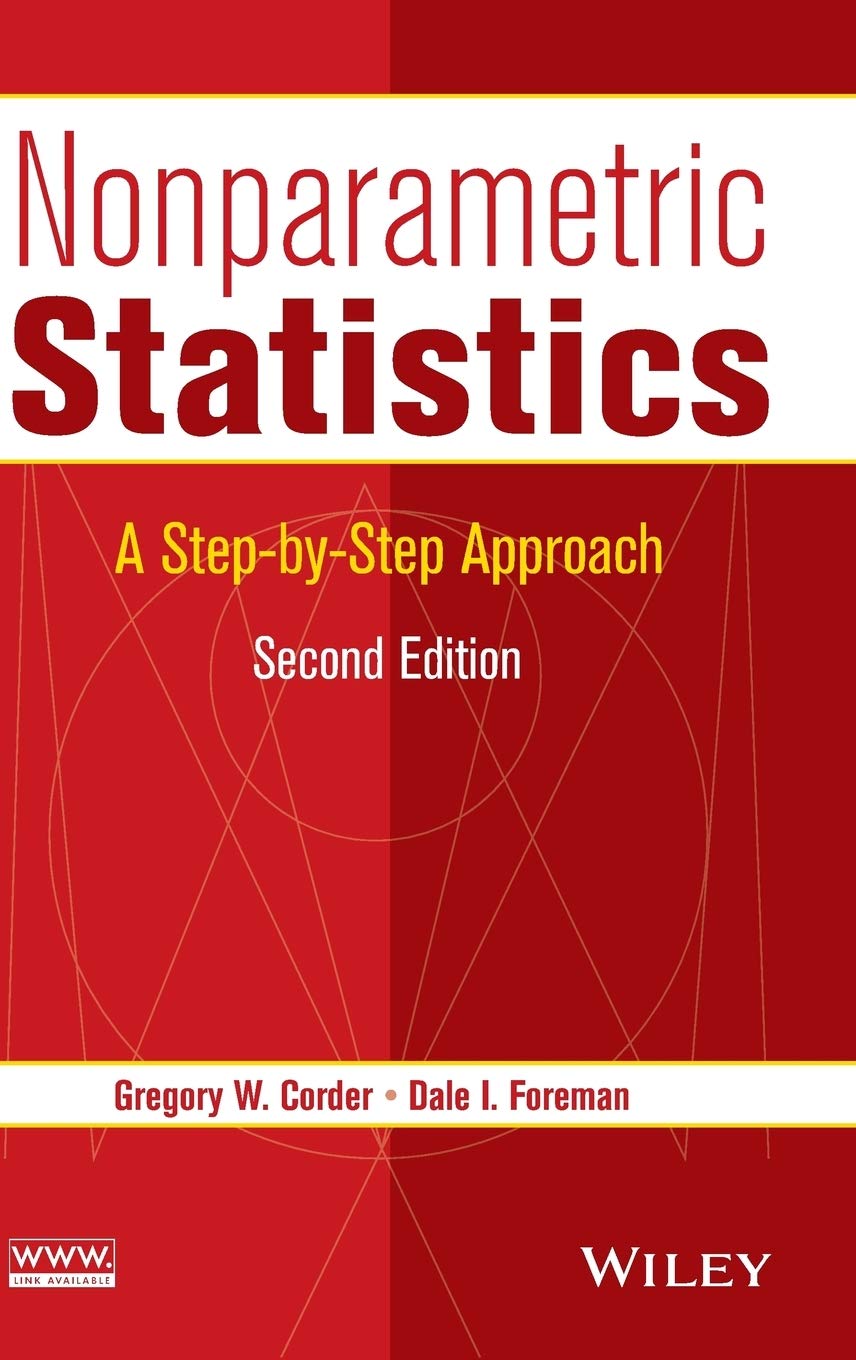Books
Best Nonparametric Statistics Books | The Full List
Book Analysis Overview
The collection of texts presents a rich tapestry of perspectives, methodologies, and applications within the realm of nonparametric statistics, catering to a broad spectrum of readers from novices to seasoned researchers. Each book, while centered on nonparametric statistical methods, offers a unique lens through which these techniques are explored, varying from theoretical underpinnings to practical applications, and the bridging of these two realms. The diversity in authors’ backgrounds, from academia to professional practice, enriches the discourse, presenting a holistic view of nonparametric statistics across different fields such as behavioral sciences, economics, medicine, and the social sciences.
Reading Recommendations
Target Audiences
- Students and Educators in Behavioral Sciences: “Nonparametric Statistics for The Behavioral Sciences” offers tailored insights for this group.
- Research Professionals: “Nonparametric Statistical Methods” and “Nonparametric Statistical Inference” cater to seasoned researchers needing comprehensive, up-to-date methods.
- Beginners in Statistics: “Nonparametric Statistics” by Corder and Foreman provides an accessible entry point into nonparametric statistics.
Specific Use Cases
- Clinical Research: “Nonparametric Statistics – Theory and Methods” and “Practical Nonparametric Statistics” are particularly valuable for designing and analyzing clinical trials where normal distribution assumptions may not hold.
- Social Sciences Research: “Nonparametric Statistics for The Behavioral Sciences” offers specific applications and examples relevant to this field.
Learning Paths
- From Theory to Practice in Nonparametric Statistics: Start with “Nonparametric Statistics – Theory and Methods” for a theoretical foundation, proceed to “Nonparametric Statistical Methods” for a blend of theory and modern computation, and culminate with “Practical Nonparametric Statistics” for application-driven learning.
Nonparametric Statistics for The Behavioral Sciences
by Sidney Siegel and N. John Castellan Jr.
Summary
Reviews
Target Audience
- Students and Early-Career Researchers in Behavioral Sciences: The book is particularly well-suited for undergraduate and graduate students beginning their journey into research, offering a clear, step-by-step guide to nonparametric statistics without the need for extensive mathematical background.
- Academic Instructors and Professors: Educators in psychology, sociology, and related fields will find this book an invaluable teaching resource, thanks to its comprehensive coverage and pedagogical approach.
- Behavioral Science Researchers: For professionals in the field who require a refresher or a comprehensive guide to nonparametric methods, this book serves as an essential reference.
Key Benefits
- Foundation in Nonparametric Methods: Readers gain a solid understanding of nonparametric statistics, enabling them to choose and apply the appropriate statistical tests for their research data, particularly when the assumptions for parametric tests are not met.
- Practical Application Focus: The book excels in demonstrating the application of statistical methods to real-world problems in the behavioral sciences, enhancing its value for researchers and practitioners.
- Enhanced Research Design: By familiarizing readers with a broad array of nonparametric techniques, the book empowers researchers to design their studies more effectively, choosing statistical methods that best suit their data and research questions.
Considerations
- Need for Updated Examples and Software Integration: Given the advancements in statistical software, readers may find the need for supplementary resources that connect the book’s teachings with modern statistical software packages.
- Mathematical Rigor: While the book is praised for its accessibility, some readers with a strong statistical or mathematical background might seek a more rigorous treatment of the underlying principles of nonparametric statistics.
Nonparametric Statistical Methods
by Myles Hollander
Summary
Reviews
Target Audience
- Graduate Students in Statistics or Data Science: The book’s comprehensive coverage of nonparametric statistical methods makes it an excellent resource for graduate students who require a deep understanding of these techniques for their research or coursework.
- Research Scientists across Various Disciplines: Given the wide applicability of nonparametric methods in research settings where data do not meet the assumptions of parametric tests, research scientists in fields such as psychology, ecology, and medicine would greatly benefit from this book.
- Data Analysts and Statisticians: Professionals working with data in business, government, or academia will find the book’s practical guidance on nonparametric methods valuable, especially when dealing with non-normal distributions or ordinal data.
- Instructors of Advanced Statistics Courses: Educators looking for a comprehensive text to support a course on nonparametric statistics will appreciate the book’s depth of coverage and the array of examples provided.
Key Benefits
- Comprehensive Coverage: The book provides an exhaustive exploration of nonparametric statistical methods, from basic concepts to advanced techniques, making it a one-stop resource for readers seeking to deepen their knowledge in this area.
- Practical Application: Through its detailed examples and discussions on implementation, the book bridges the gap between theory and practice, enabling readers to apply nonparametric methods to their own data analysis problems effectively.
- Updated Methodologies and Computing Techniques: Reflecting the latest developments in the field, the book includes modern approaches and computational methods, ensuring that readers are equipped with current best practices in nonparametric statistics.
- Clarity and Depth: The authors have successfully balanced the need for detailed explanation of complex concepts with the desire for readability, making sophisticated statistical methods accessible to a broad audience.
Considerations
- Level of Statistical Background Required: Potential readers should be aware that a basic understanding of statistics is assumed. Those completely new to statistics may find some sections challenging and might need supplemental materials to fully grasp the concepts presented.
- Pace and Depth of Coverage: While the comprehensive nature of the book is a strength, some readers, especially those looking for a quick overview or introductory material, may find the pace and depth more extensive than needed.
- Cost and Accessibility: As a specialized academic text, the book may be priced higher than general statistical guides. Readers should consider whether the depth of coverage aligns with their specific needs and budget.
Nonparametric Statistics – Theory and Methods
by Jayant V Deshpande, Uttara Naik-nimbalkar and Isha Dewan
Summary
Reviews
Target Audience
- Advanced Undergraduate and Graduate Students: The detailed theoretical explanations and rigorous mathematical derivations make this book particularly suitable for advanced undergraduates or graduate students in statistics, mathematics, or related fields who have a solid foundation in basic statistics and are looking to expand their knowledge into nonparametric methodologies.
- Academic Researchers and Practitioners: Professionals in fields that rely heavily on statistical analysis (e.g., economics, environmental science, psychology) will find the book’s comprehensive coverage of nonparametric methods and practical applications invaluable for conducting research and analyzing data without the strict assumptions required by parametric methods.
- Data Scientists and Analysts: With the increasing importance of data-driven decision-making across industries, data professionals seeking to enhance their analytical toolbox with robust statistical methods will benefit from the book’s practical insights into nonparametric approaches, which are often applicable in situations where traditional models fail.
Key Benefits
- Comprehensive Coverage: One of the book’s primary strengths is its broad and in-depth exploration of both the theoretical underpinnings and practical applications of nonparametric statistics, making it a one-stop resource for readers looking to master the subject.
- Bridging Theory and Practice: The authors successfully connect theoretical concepts with real-world applications, providing readers with the tools to apply nonparametric methods in various research contexts. This practical relevance is enhanced by the inclusion of examples and case studies from different disciplines.
- Up-to-Date Techniques: Incorporating the latest advancements and techniques in nonparametric statistics ensures that readers are getting information that reflects the current state of the field, preparing them for both academic and professional endeavors.
Considerations
- Pre-requisite Knowledge Required: Given the book’s depth and the complexity of the topics covered, readers without a basic understanding of statistics or those not comfortable with mathematical concepts may find the material challenging. It’s important for potential readers to assess their readiness before diving into this advanced text.
- Learning Curve: The comprehensive nature of the book, while a significant advantage, also means that there is a substantial amount of information to digest. Readers should be prepared for a steep learning curve and may need to supplement their study with additional resources or guidance to fully grasp the concepts presented.
Nonparametric Statistical Inference
by Jean Dickinson Gibbons and Subhabrata Chakraborti
Summary
Reviews
Target Audience
- Advanced Statistics Students: The detailed explanations and comprehensive coverage make this book ideal for graduate students or upper-level undergraduates who have a solid foundation in statistics and are looking to expand their knowledge into nonparametric methods.
- Academic Researchers: Scholars conducting research in fields that often encounter non-standard data distributions, like social sciences, biology, or environmental studies, will find the book’s extensive discussion of nonparametric techniques invaluable for their work.
- Data Science Professionals: Given the increasing importance of handling large and complex datasets in data science, professionals in this area can benefit from the book’s exposition on nonparametric methods that are often applicable in data-driven decision-making processes.
Key Benefits
- Comprehensive Coverage: The book provides a thorough exploration of nonparametric statistical methods, from basic concepts to advanced techniques, making it a one-stop reference for anyone looking to understand or apply these methods.
- Practical Examples: The inclusion of practical, real-world examples helps bridge the gap between theoretical statistical concepts and their application, enhancing the reader’s ability to apply nonparametric methods in their own work.
- Up-to-Date Content: By incorporating the latest developments in nonparametric statistical methods, the book ensures that readers are getting contemporary insights and techniques that reflect current best practices in the field.
Considerations
- Mathematical Rigor: The book’s in-depth and technical nature means that it is best suited for readers with a solid background in statistics and mathematics. Those without this foundation may find the material challenging.
- Pacing and Density: Given the comprehensive nature of the coverage, some readers, especially those new to nonparametric statistics, may find the book’s pacing and density daunting. It may require a more deliberate and slower reading approach to fully grasp the material.
Practical Nonparametric Statistics
by W. J. Conover
Summary
Reviews
Target Audience
- Students in Statistics and Related Fields: The book’s clear explanations and practical focus make it an excellent resource for undergraduate and graduate students who need to understand and apply nonparametric methods in their coursework or research projects.
- Researchers and Practitioners in Various Disciplines: Nonparametric methods are widely applicable across disciplines such as psychology, sociology, medicine, and environmental science. Researchers and practitioners in these fields will find the book valuable for analyzing data that do not meet the assumptions required for parametric testing.
- Data Analysts and Data Scientists: Professionals working with data in business, finance, and technology sectors can benefit from the book’s practical approaches to nonparametric analysis, especially when dealing with non-normal datasets or when traditional parametric methods are not applicable.
Key Benefits
- Accessibility: Conover’s straightforward and practical approach makes complex statistical concepts accessible to readers with a variety of backgrounds, enabling them to apply nonparametric methods confidently.
- Comprehensive Coverage: The book covers a wide range of nonparametric techniques, from basic tests to more advanced methods, providing readers with a versatile toolkit for statistical analysis.
- Practical Application: Through its focus on real-world examples and datasets, the book demonstrates the practical relevance of nonparametric methods, helping readers understand how these techniques can be used to solve actual research problems.
Considerations
- Lack of Deep Theoretical Discussion: While the book excels in its practical approach, readers seeking a thorough mathematical understanding of nonparametric methods may find the treatment of theoretical aspects somewhat lacking.
- Editions and Updates: As with any textbook in a rapidly evolving field, readers should be mindful of the edition they are using. Newer editions may offer updated content and examples that reflect current practices and technological advancements in statistical analysis.
- Pre-requisite Knowledge: Despite its accessible approach, a basic understanding of statistics is assumed. Readers completely new to the subject may need to supplement their reading with introductory materials in statistics.
Nonparametric Statistics
by Gregory W. Corder and Dale I. Foreman
Summary
Reviews
Target Audience
- Students and Academics: This group will benefit from the book’s thorough exploration of nonparametric statistics, comprehensive examples, and exercises at the end of chapters. It’s an excellent resource for graduate students in statistics or related fields who need a solid foundation in nonparametric methods.
- Professional Statisticians and Data Scientists: Professionals in these fields may find the book’s practical applications and advanced topics useful for their work, especially when dealing with data that do not meet the assumptions required for parametric tests.
- Researchers in Various Disciplines: Given that nonparametric methods are widely applicable across different areas of research, from psychology to environmental science, researchers will find the book’s detailed case studies and applications particularly beneficial.
Key Benefits
- Comprehensive Coverage: The book provides a detailed overview of nonparametric statistics, covering everything from basic concepts to more advanced methods. This makes it a valuable resource for both learning and reference.
- Practical Examples and Applications: The inclusion of real-world examples and applications helps readers understand how nonparametric statistics can be applied in various fields, enhancing their ability to use these methods in their own research or professional work.
- Accessible Explanations: Despite the complex nature of the subject, the authors have managed to present the material in a way that is accessible to readers with a basic understanding of statistics, making it easier to grasp the nuances of nonparametric methods.
Considerations
- Prior Knowledge Required: While the book is praised for its clarity, readers without a basic understanding of statistics might find it challenging. Some prior knowledge is assumed, which could be a barrier for complete novices.
- Depth of Content: The book’s comprehensive nature, while a strength, can also be overwhelming for some. Readers seeking a quick overview might find the depth and breadth of the material more than they need.
- Price and Accessibility: As with many academic texts, the cost of the book might be a consideration for individuals or institutions on a tight budget. Additionally, the practical examples, while useful, may require access to specific statistical software or tools.







